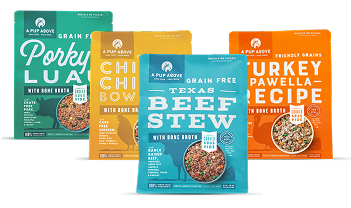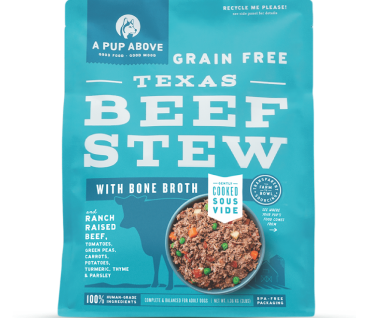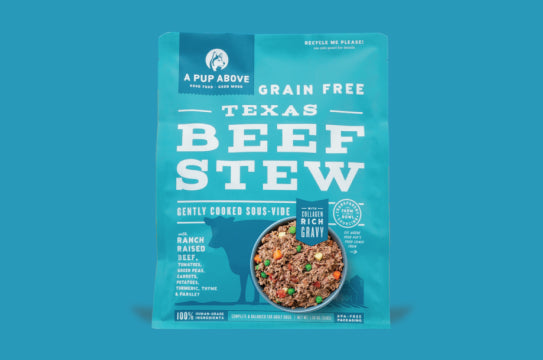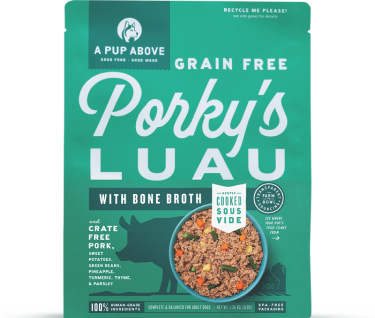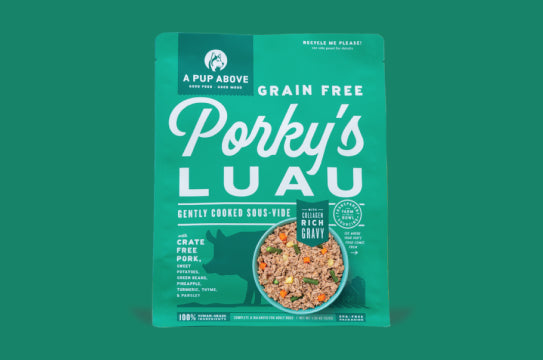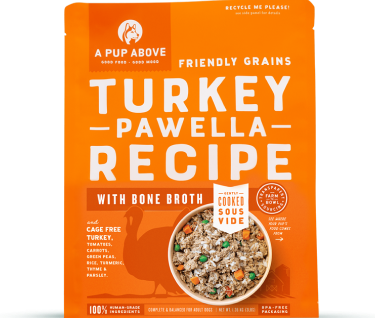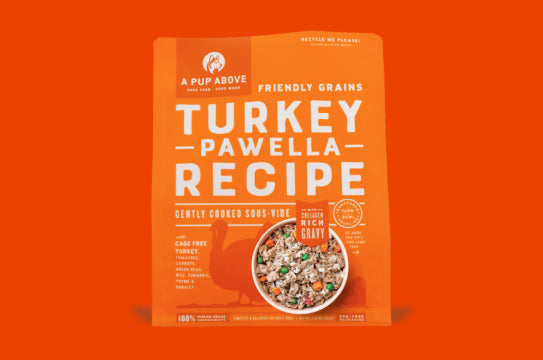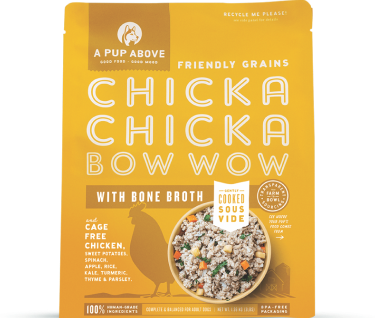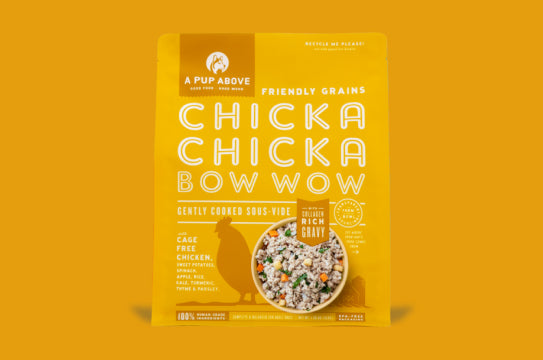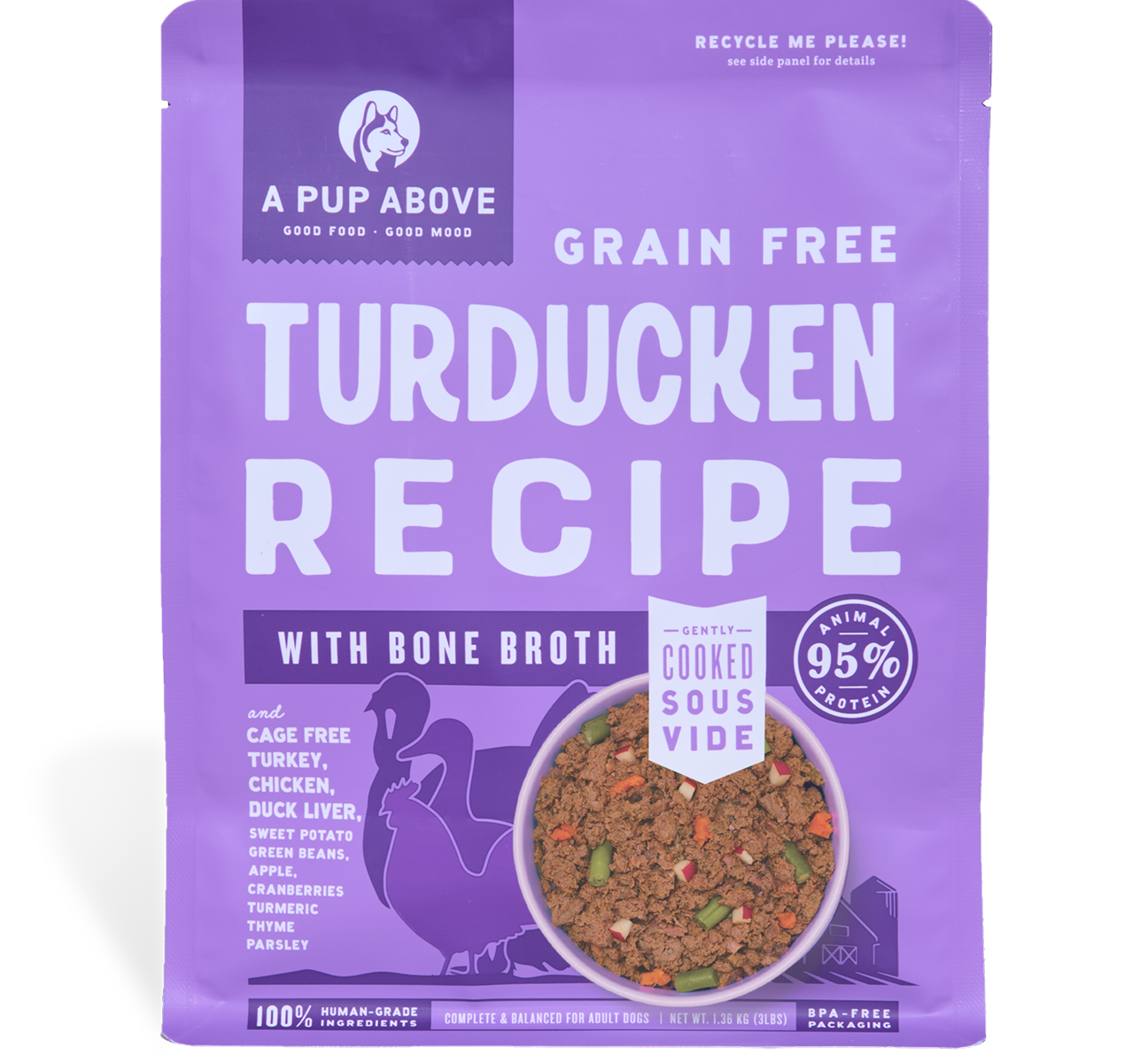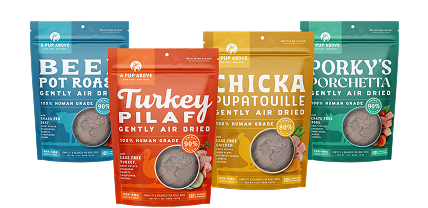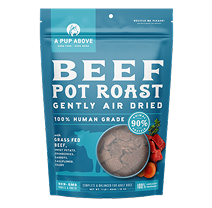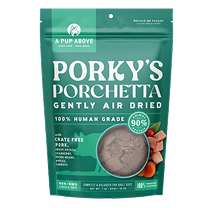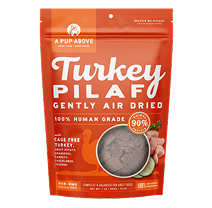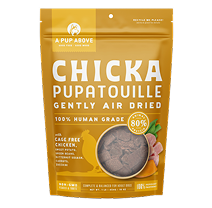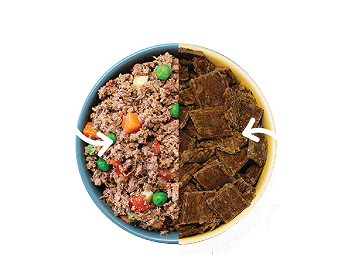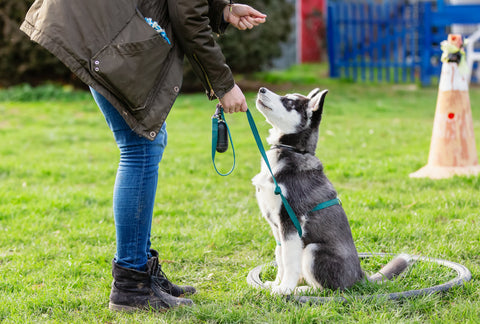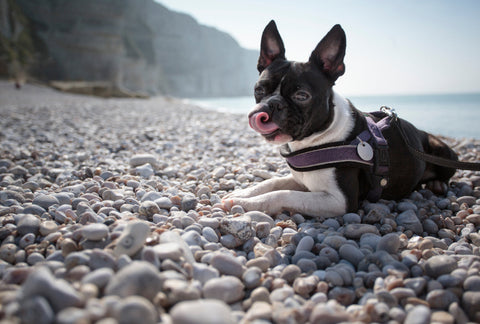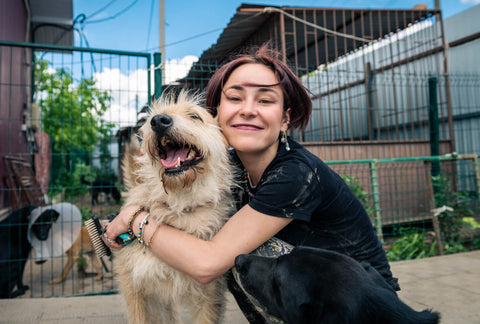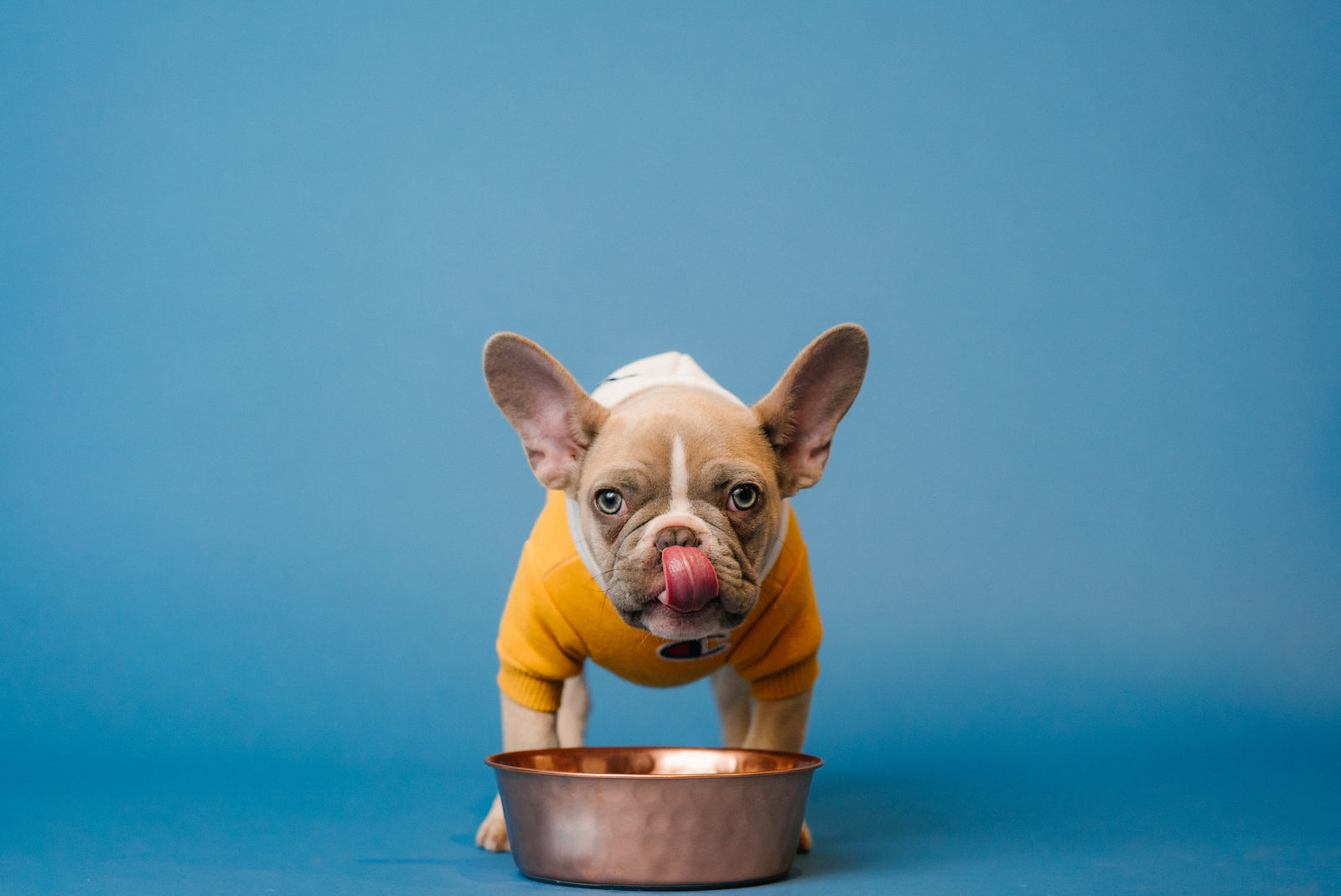
Keep Your Dog’s Hydration Top-of-Mind for Healthy Fun
After a full year of feeling cooped up by pandemic, it’s a fair bet that this coming summer will be filled with activity. No doubt you and your dog will be raring for adventure from favorite hikes to swimming holes, dog parks to open-air festivals — the works!
But remember, summer months bring powerful heat that your pup feels just as much as you do. Keep in mind that both you and your dog need to monitor hydration and heat in order to keep the fun times rolling. Here’s the info on why and how to keep your dog hydrated at home and beyond.
How does my dog regulate heat again?
Remember, your dog doesn’t rely on sweating to regulate body heat the way you do — they only sweat minimally through paws and ears. Instead, your dog pants to regulate body heat.
A dog’s coat keeps them warm in cold weather, and cool in hot weather. When it gets too hot, dogs seek a cool place in the shade to lie down and absorb the coolness into its coat. Meanwhile, blood vessels in the skin and tongue dilate. This brings hot blood to the surface to radiate out that heat.
A dog will then pant, which brings cooler air into the upper respiratory system, evaporating hot moisture from mucous membranes to cool the body. Dogs need to drink lots of water to replace this lost moisture.
So long as your dog has access to plenty of fresh cool water, you don’t need to worry about your dog panting. Your dog is just doing what is natural to keep them cool. But, keep in mind that humidity can affect how well panting works to cool your dog.
If the humidity won’t allow your dog’s heat to evaporate, they can become heat stressed. Giving your dog a good sit in front of a fan or in air conditioning can help when the outside environment is too hot and humid for comfort.
Planning for Safe Summer Fun with Doggos
The key to keeping your dog hydrated is to think ahead. Don’t let special vacation or play time pass without enjoying the great outdoors — but keep an eye out for hydration even when you’re on vacation. Here are 3 pro-tips to help you watch out for heat exhaustion in your best bud, and keep your dog’s hydration top-of-mind.
Know Your Dog
The first step to safe summer adventuring with your best bud is to know your dog well. What kind of dog do you have, and what are their natural strengths or weaknesses?
For example, dog endurance levels differ. Flat or short faced dogs like Bulldogs, Japanese Chins, or Pugs tend to have a lower endurance level due to a limited ability to intake oxygen.
Dogs with longer noses and deeper chests, like Greyhounds and Great Danes, have a better capacity for regulating heat in hotter climates. Adjust your expectations according to your dog’s physical abilities.
Your dog’s characteristics also impact how much sun exposure they can handle. Pups with lighter-coloured, thinner coats won’t have as much protection for their skin. Limit sun exposure for pets with light, thin coats, and/or light coloured sensitive areas like snout and ears.
Feed for Moisture
Keeping your dog hydrated isn’t just about water — you can start hydrating your dog every day with moisture-rich feeding strategies. The American Kennel Club (AKC) notes that it’s best to be proactive in adding moisture to your dog’s diet in warmer weather.
“Like people, some dogs drink more than others, so you may need to take extra care to make sure picky drinkers get enough water” (AKC). If you suspect that your pup isn’t in the habit of drinking enough water regularly, here are some tips on how to keep your dog hydrated via their diet:
1. You can add a small amount of water to dry food to hydrate your dog better at dinner time.
2. Even better, feed your dog a moisture-rich food like A Pup Above that comes with its own tasty and natural hydrating gravy.
3. Tempt your dog to drink more with a bowl of bone broth, either on its own or added to meals.
4. Try keeping your dog hydrated with cooling homemade doggy popsicles! We like to add fruit to bone broth or goats milk to freeze into ice cubes for cooling hydration!
Timing is Everything
Your dog will be enthusiastic about going out to run, bike, or play at any time of day. But when it comes to dog hydration and heat safety, it’s wise to know and choose the best times to go out for exercise.
Heat will be less of a factor for both you and your pup if you exercise in the early morning horse between 4am and 7am, and in the evening after sunset.
Even if the air temperature doesn’t feel too bad to you during the day, you’ve got to think about the hot pavement your pup will be walking barefoot on. Any pavement, from black asphalt to cement, can be up to 60 degrees hotter than the air.
So, even if it’s a tolerable 80 degrees out, pavements could be up to 140 degrees. A 60-second exposure to anything above 125 is hot enough to burn a dog’s paws. Early morning walks are a safe bet for avoiding hot pavement. Also, keep to shaded areas, and stay on dirt and grass as much as possible in the heat.
Quick tip: Put your hand on the pavement for 10 seconds. If it’s too hot for you to keep your hand in place, then it’s too hot for your pet.
Just Add Water
Whenever you do exercise, be sure to bring lots of water along. It’s well worth keeping a water bottle and collapsible dog bowl in the car to refresh your pet as needed. There are lots of fun travel bowl and no-spill options on the market.
During the hot months, another great way to protect your dog from dehydration or heat exhaustion is to do fun water activities whenever possible. Fetch becomes a whole new adventure when the ball is in the water. Swimming, paddling, and more may be fun for both you and your canine companion.
Consider Cooling Tools
Remember, your dog needs ways to cool down after exercise in the hot sun. You can help by giving them a shady, breezy, or air conditioned place to lie down and pant it out. Be sure to incorporate this recovery step into your adventure routines.
Consider giving your dog a fan for more panting efficiency. You can also look into a cooling mat, like this eco-friendly option from The Green Pet Shop. Special swamp cooler jackets that you soak in water can help keep your dog cool and protect them from sun exposure, too.
How can I tell if my dog is dehydrated?
Your dog can’t tell you in words if they are overheated or need water, but there are three simple ways you can tell if this is the case. You can monitor your dog’s hydration levels by keeping an eye on their skin and gums.
- The Skin Elasticity Test: To check for dehydration, gently pinch the skin, and pull slightly upwards. In a well-hydrated animal, the skin will spring back to its original position right away. The skin of dehydrated dogs, on the other hand, will take longer to fall back into place. It’s a good idea to test your dog’s skin when you know they are well hydrated so you can see what normal skin elasticity looks and feels like in your dog. This is an especially good idea if you have a wrinkly skin breed, like a Bulldog or Neapolitan Mastiff. If you know the feel of hydrated skin, those adorable wrinkles won’t mislead you!
-
Capillary Response Test: Gums are another great indicator of a dog’s hydration. A healthy dog’s gums should be a happy pink, and glossy with a bit of saliva, just like yours! Testing your dog’s hydration levels with the gums is called a Capillary Response Test (CRT), and involves pressing a finger steadily on the gums for a few seconds. When you remove your finger, the tissue turns pale to white because the blood in the tissue will have been displaced by the pressure of your finger. But not for long.
A well-hydrated dog’s gums will return to that happy shade of pink almost immediately, as blood vessels (capillaries) refill. The time it takes for the capillaries to refill, is known as the Capillary Refill Time (CRT). A normal CRT is about 1 second. If the tissue remains the lighter shade for longer, the dog may be dehydrated, or experiencing shock. If this is the case, please assess heat stress immediately, and see your veterinarian. - Temperature Check. If you suspect your dog may be overheated, you can check their temperature. A healthy dog’s temperature will be under 104 degrees. If your dog’s temperature is higher, consider taking actions to cool your dog down. For a fairly accurate home method of checking your dog’s temperature, simply place a medical thermometer under your pet’s armpit, then add 3 degrees to the reading.
Don’t Dogs Know How to Stay Hydrated?
Dogs will seek ways to cool down as needed, but they are often unable to meet their own needs. It is an owner’s responsibility to ensure that dogs always have a source of fresh, cool water available. And remember, NEVER leave your pets in a car in warm weather, even if it is overcast weather.
Just like us, dogs can become dehydrated and this can be very serious. The American Kennel Club (AKC) notes that “it might seem like offering your dog a bowl of water is enough to restore her water balance, but this only applies to very mild cases of dehydration.”
In hotter months when your dog does more panting, keep a watchful eye out for signs of stress. Heat or dehydration stress indicators are:
- sluggishness
- glazed eyes
- rapid heartbeat
- difficulty breathing
- unresponsiveness
- high body temperature
- vomiting
- profuse salivation
- deep red or purple-ish tongue
- seizure
If your dog experiences any, or a combination of these symptoms, contact your veterinarian immediately.
How to rehydrate a dog if dehydration happens
If the situation is serious, you must take your dog to a veterinarian immediately. But here are some tips on cooling down and keeping your dog hydrated after hot summer adventures:
- Be Strategic. Focus on cooling down highly vascular areas — where blood vessels are many and closer to the skin — like paws, belly/groin, neck, chest, and armpits.
- Use Cool Towels. Apply cool (not cold) water using wet towels in these areas — this will keep the cooling going longer than just dousing your dog in water.
- Wrap Ice Packs. You can also use ice packs, but be sure to wrap them in cloth to protect your dog’s delicate skin in highly vascular areas.
- Get Water In. As you work to cool the outside of the body, let your dog drink small amounts of water or lick ice cubes.
Top Stories
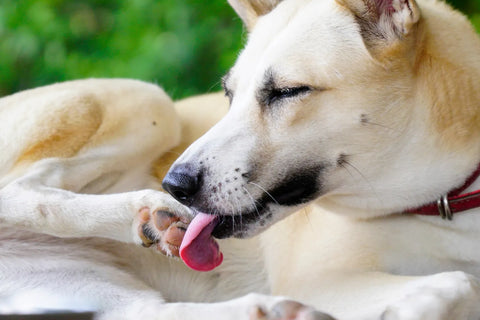
Why Do Dogs Lick Their Paws?
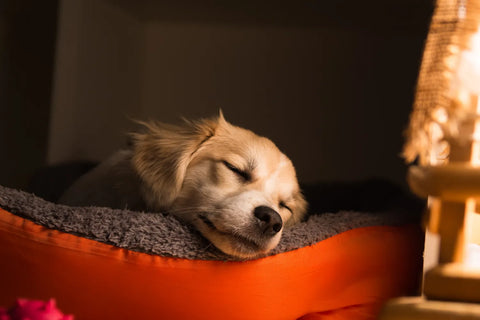
Why Do Dogs Whimper & Make Noises in Their Sleep?
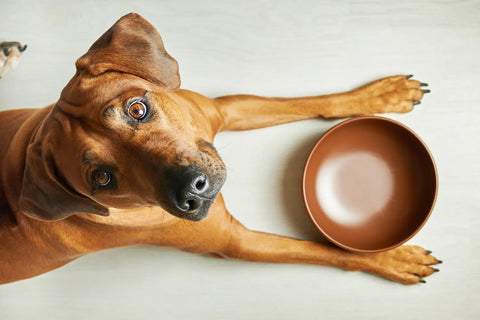
Healthy Vet-Approved Homemade Dog Food Recipes

How To Cook Sweet Potatoes for Dogs


